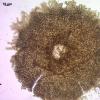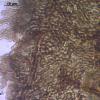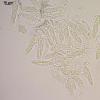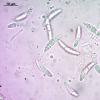
07-12-2025 16:07
Arnold BüschlenHallo, ich habe in einer Moos-Aufsammlung (epiphy

08-12-2025 21:04
Mark Stevens"Hello everyone,I'm relatively new to microscopy (

09-12-2025 12:06
 Andgelo Mombert
Andgelo Mombert
Bonjour,Je recherche l'article concernant Hypobryo

08-12-2025 18:59
 Lothar Krieglsteiner
Lothar Krieglsteiner
.. found by a seminar-participant, I do not know t

08-12-2025 17:37
 Lothar Krieglsteiner
Lothar Krieglsteiner
20.6.25, on branch of Abies infected and thickened

16-03-2014 22:00
Hello,I found this species a few months ago but ha

08-12-2025 13:39
Thomas Læssøehttps://svampe.databasen.org/observations/10572899
there is some uncertainty with identification of this species.
Large spores of this specimen coincide only with one species in Stomiopeltis (S. betula) though the host differs (Luttrell, 1946; Ellis, 1977). There is a species described from Ledum (S. ledi), but it has much smaller spores (Remler, 1979). It could be possible to consider S. versicolor as well, which also was collected on Rhodod. hirsutum. But it was later transferred to Microthyrium and in "British fungi keys" mentioned with spore appendages. Therefore i inclined to S. betula. Probably you will have other suggestions?
Nina.
Thyriothecia scattered on upper leaf side (fallen leaves of Andromeda polifolia), dark brown, 150-200 mk in diameter, with visible pore.
Scutellum from irregular lobed cells, in some ascocarps (probably later in development) cells to the edge become more elongate and radially arranged; asci 37–44 x 8–10 mk; pseudoparaphyses filiform, about 1.5 mk broad; spores fusoid, with many oils, slightly heteropolar, with one weak septa, some curved, 15 (13–18) x 3.2 (2.5–3.9) mk (n=23, measurements in dead state).

I only know S. betulae on Betula on which it is very common here. My measurements are always towards the top of the range given by Pamela Ellis - see attached image. I think your measurements are too small for S. betulae - perhaps you have an undescribed taxon. Do you have any macro-images?
Cordialement
Chris
thank you for showing me S. betulae. It looks more robust, and yes, spores in my specimen are smaller. I did not make macro-photos because it is barely seen by naked eye, very scattered dots on leaves, better to use lens for them ). I will collect more material of this group to make clear picture later, now will left it under-identified.





